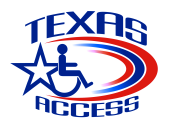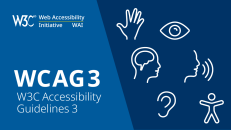In today’s digital age, web accessibility is more important than ever. Ensuring that websites are accessible to all users, including those with disabilities, is not just a legal requirement but also a moral imperative. However, achieving compliance in web accessibility presents numerous challenges for website owners and developers.
Addressing these challenges is critical for both legal compliance and enhancing the user experience. Accessible websites can reach a broader audience, improve customer satisfaction, and avoid legal repercussions. This article explores the biggest compliance challenges websites face in web accessibility.
See examples of websites with bad accessibility 👉
1 Navigating Ever-Changing Regulations
Navigating Ever-Changing Regulations

Complexity of Standards
One of the primary challenges is the complexity and frequent updates of accessibility standards like the Web Content Accessibility Guidelines (WCAG) and the Americans with Disabilities Act (ADA). These standards are continually evolving to address new technologies and user needs, which can overwhelm website managers who must stay current with the changes.
Organizations should regularly review updates from regulatory bodies like the W3C (World Wide Web Consortium) to stay current with WCAG changes. Scheduling periodic audits ensures compliance and helps adapt to evolving standards quickly.
Global Diversity in Regulations
Another layer of complexity is the global diversity in accessibility regulations. Different regions have varying legal requirements, such as the European Union’s EN 301 549, which differs from U.S. regulations. Managing compliance across multiple jurisdictions can be daunting for international websites.
Therefore, companies need to develop a compliance roadmap tailored to the regulatory requirements of each region, with a focus on aligning the most common aspects across markets to reduce redundancy in remediation efforts.
The BBC, as a global broadcaster, has to comply with various accessibility standards across different countries. They have developed a comprehensive accessibility strategy that includes regular audits and updates to ensure compliance with both UK and international standards. This proactive approach has helped them maintain a high level of accessibility across their digital platforms.
2 Technical Implementation Hurdles
Technical Implementation Hurdles
Retrofitting Older Websites
Updating older websites to comply with current accessibility standards is a significant challenge. Many older sites were built without accessibility in mind, leading to outdated code and legacy systems that require substantial redesigns to meet modern standards.
It is crucial for organizations in this scenario to prioritize essential elements such as alt text for images, keyboard navigation, and compatibility with screen readers. Create a phased plan to address more complex areas gradually.
Ensuring Full Site Accessibility
Achieving comprehensive accessibility involves addressing various technical difficulties. Dynamic content, multimedia elements, and third-party integrations can all pose challenges. Ensuring that all aspects of a website are accessible requires meticulous planning and execution, often involving significant technical expertise.
In our mobile-first world, ensuring accessibility on mobile devices is just as critical as on desktop. Mobile users with disabilities face challenges such as smaller touch targets, compatibility with screen readers, and ease of navigation through touch and voice commands.
Google’s accessibility tools, such as TalkBack for Android, are designed to ensure a seamless experience for users across devices, highlighting the importance of both mobile and desktop accessibility.
Automated vs. Manual Testing
Relying solely on automated tools for accessibility testing may overlook some issues. Manual testing, especially by users with disabilities, can identify usability problems that automated tools miss. A combination of both approaches is essential for comprehensive testing.
YouTube uses both automated testing tools and manual user input to ensure the accessibility of their platform, balancing the efficiency of automation with the real-world insights provided by users with disabilities.
3 Resource and Budget Limitations
Resource and Budget Limitations

High Costs of Auditing and Remediation
Conducting thorough accessibility audits and implementing necessary changes can be financially burdensome. Hiring experts, purchasing specialized tools, and dedicating time to remediation efforts all contribute to the high costs associated with achieving compliance.
Maintaining accessibility compliance is an ongoing process that requires continuous investment. Regular updates, staff training, and monitoring are essential to ensure that new content and features remain accessible. This ongoing commitment can strain resources and budgets, especially for smaller organizations.
For cost-effective compliance, prioritize quick fixes such as keyboard navigation and alt-text for images, and use free or low-cost accessibility testing tools like WAVE or Axe. Outsource only complex issues that require expertise.
Major e-commerce platforms like Amazon conduct regular audits and updates to ensure their site is accessible to all users. This investment in accessibility has helped them create a more inclusive shopping experience.
4 Lack of Expertise
Lack of Expertise
Scarcity of Skilled Professionals
There is a notable shortage of accessibility experts in the market. The high demand for skilled professionals makes it challenging for businesses to find qualified candidates who can effectively address accessibility issues.
A practical strategy would be to consider training existing staff in accessibility standards through online certifications and workshops. Partner with consultants for more complex tasks until in-house expertise is developed.
Training Staff
Training existing staff to understand and implement accessibility standards is another significant challenge. Comprehensive training programs are necessary to equip staff with the knowledge and skills needed to prioritize accessibility. Fostering an organizational culture that values accessibility is crucial for long-term success.
Microsoft has been a leader in promoting accessibility, partly by investing in training programs for their employees. They have developed internal resources and training modules to ensure that their teams are well-versed in accessibility standards and best practices. More companies should follow this approach.
5 Legal and Compliance Risks
Legal and Compliance Risks
Increasing Litigation
The rise in accessibility-related lawsuits highlights the legal and financial risks of non-compliance. High-profile cases have demonstrated the potential consequences of failing to meet accessibility standards, including substantial fines and reputational damage. For instance, in 2017, the Winn-Dixie grocery chain was sued because its website was not accessible to visually impaired users. The court ruled in favor of the plaintiff, marking one of the first times a court had ruled that the ADA applies to websites. This case set a precedent and highlighted the legal risks of non-compliance.
To avoid court proceedings, conduct preemptive legal reviews of your website’s accessibility features. Regularly audit and document compliance to build a strong defense should any legal challenges arise.
Proactive vs. Reactive Approaches
Shifting from a reactive approach, where businesses respond to legal challenges, to a proactive approach, where compliance is ensured from the start presents its own set of challenges. Proactive compliance can reduce legal risks and improve user experience, but it requires a significant upfront investment in resources and planning.
Airbnb’s proactive approach to integrating accessibility features into their platform from the start has helped avoid legal issues and provided a more inclusive platform for all users.
6 Technological Advancements and Compatibility Issues
Technological Advancements and Compatibility Issues
Keeping Pace with New Technologies
Adapting accessibility practices to new and emerging technologies is a continuous challenge. Technologies like artificial intelligence (AI), augmented reality (AR), and virtual reality (VR) offer new opportunities but also introduce new accessibility hurdles that must be addressed. Incorporate accessibility features early in the development phase of emerging technologies. Ensure that innovations such as AI-powered voice commands are accessible to users with different abilities.
Apple continues to push boundaries in integrating accessibility into their cutting-edge products, offering features like VoiceOver and Live Listen, ensuring that new technology remains accessible to users with disabilities.
Cross-Platform Consistency
Ensuring that accessibility solutions work uniformly across all platforms and devices is essential. Achieving cross-platform consistency requires thorough testing and adaptation to different environments, which can be resource-intensive. Google’s accessibility tools, like TalkBack for Android and ChromeVox for Chrome OS, are designed to provide a uniform experience for users with disabilities across all devices. Their commitment to cross-platform consistency helps maintain high accessibility standards across their product range.
Conclusion
The challenges of navigating ever-changing regulations, technical implementation hurdles, resource and budget limitations, lack of expertise, legal and compliance risks, and technological advancements are significant. They have far-reaching implications for businesses and organizations.
Embracing a culture that prioritizes accessibility is not just a compliance requirement but a competitive advantage. Overcoming these challenges can lead to a more inclusive digital environment, benefiting both businesses and users. By viewing accessibility as an integral part of their overall strategy, organizations can enhance their reputation, reach a broader audience, and foster a more inclusive society.
Web accessibility should not just be about avoiding lawsuits or meeting regulations. It is about providing equal access to all users. By embedding accessibility in the company’s values, organizations can create a more inclusive web that reflects their commitment to diversity and inclusion.







